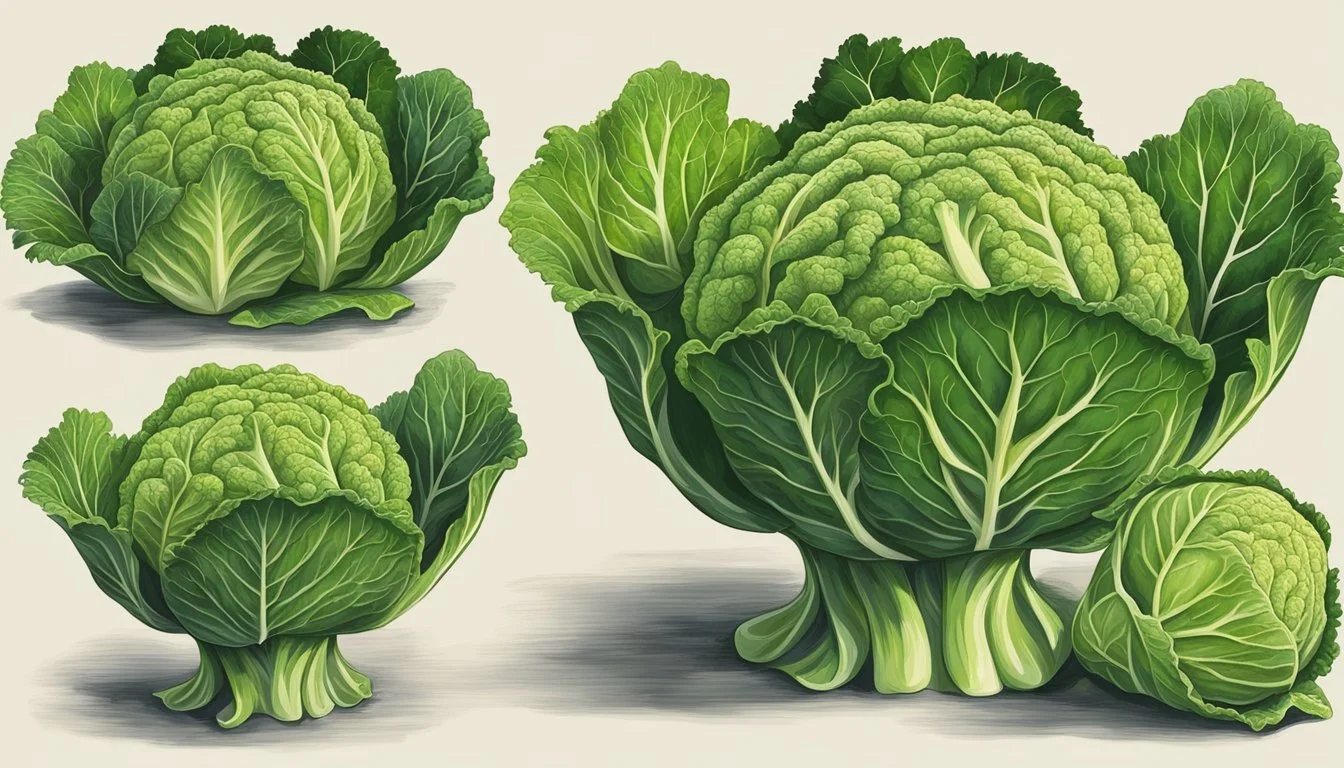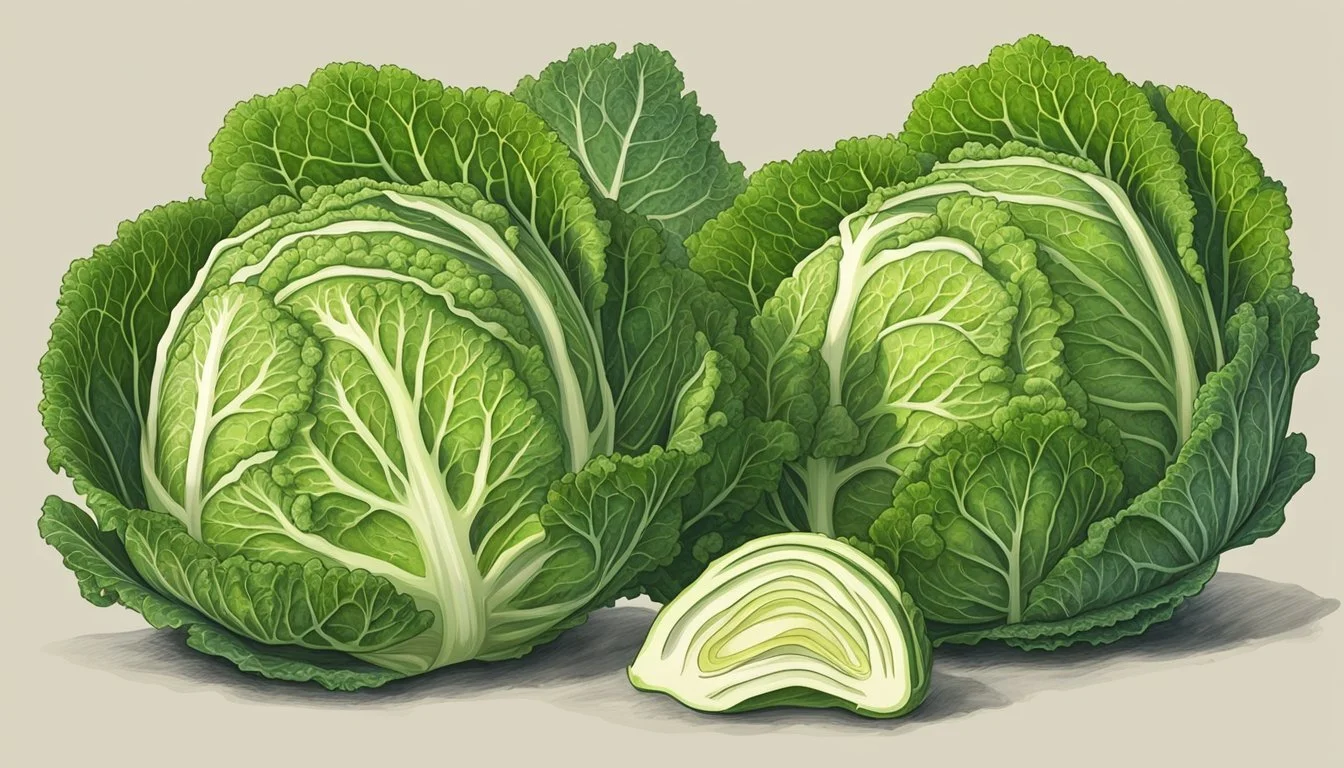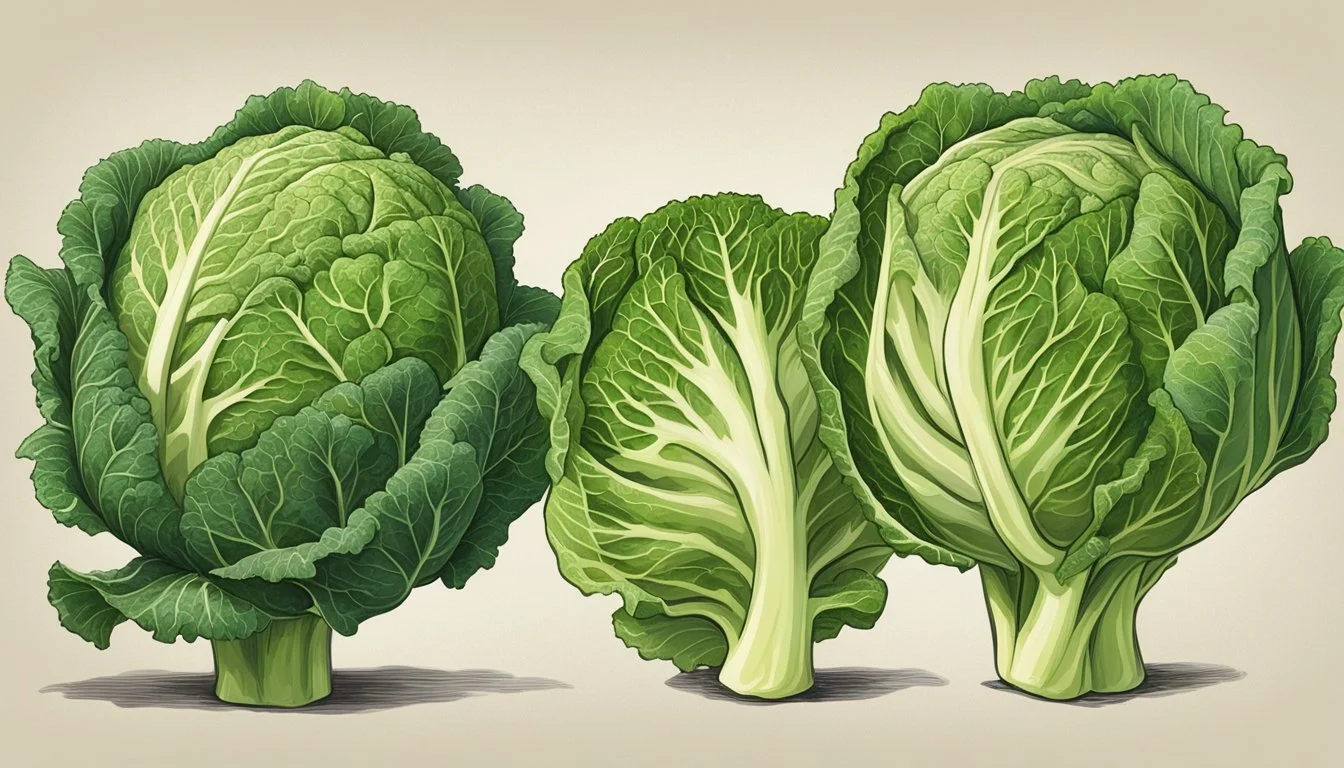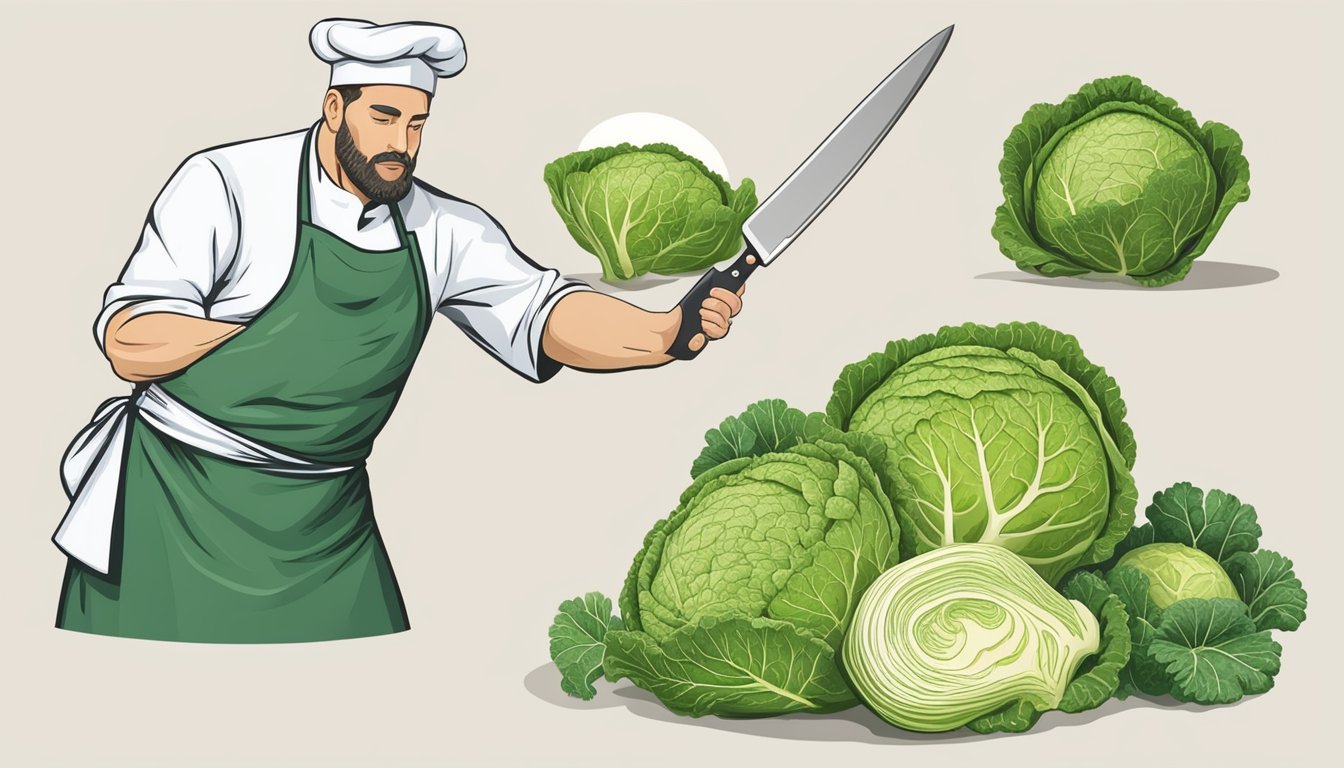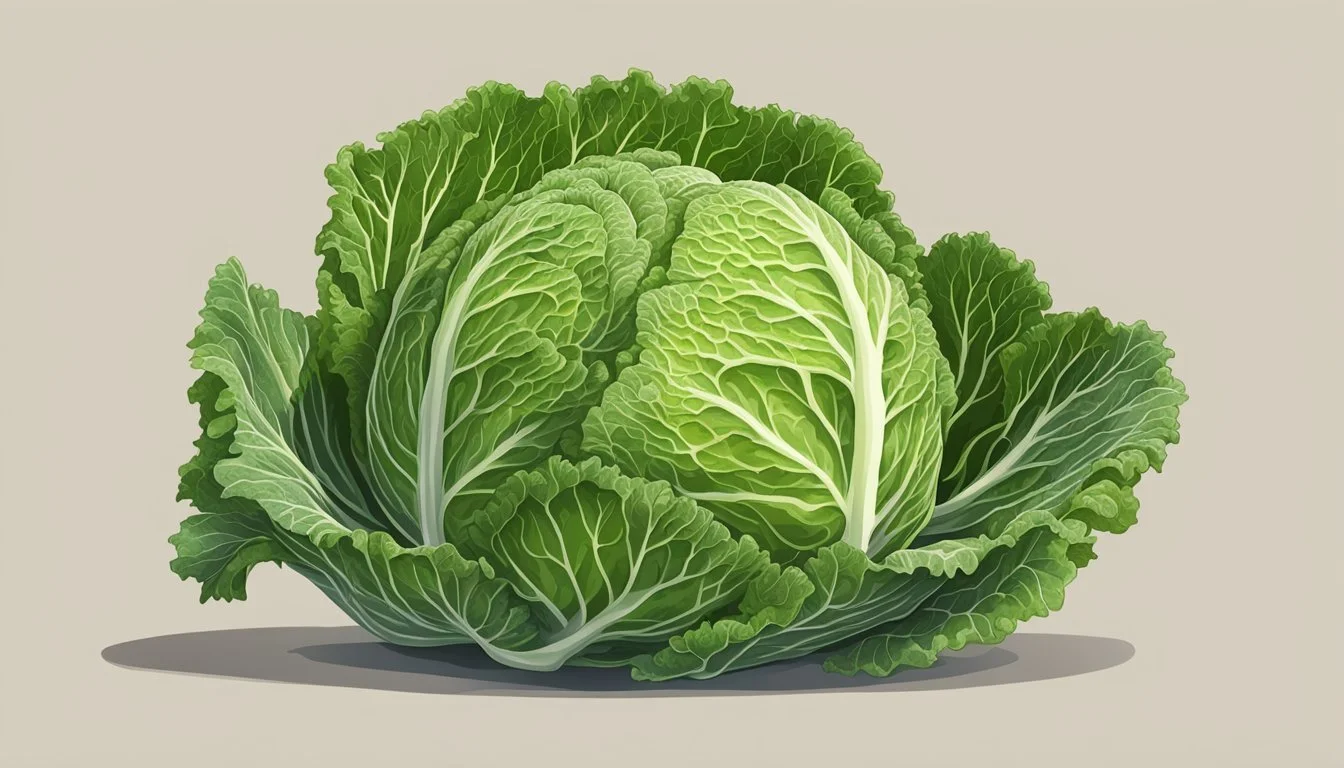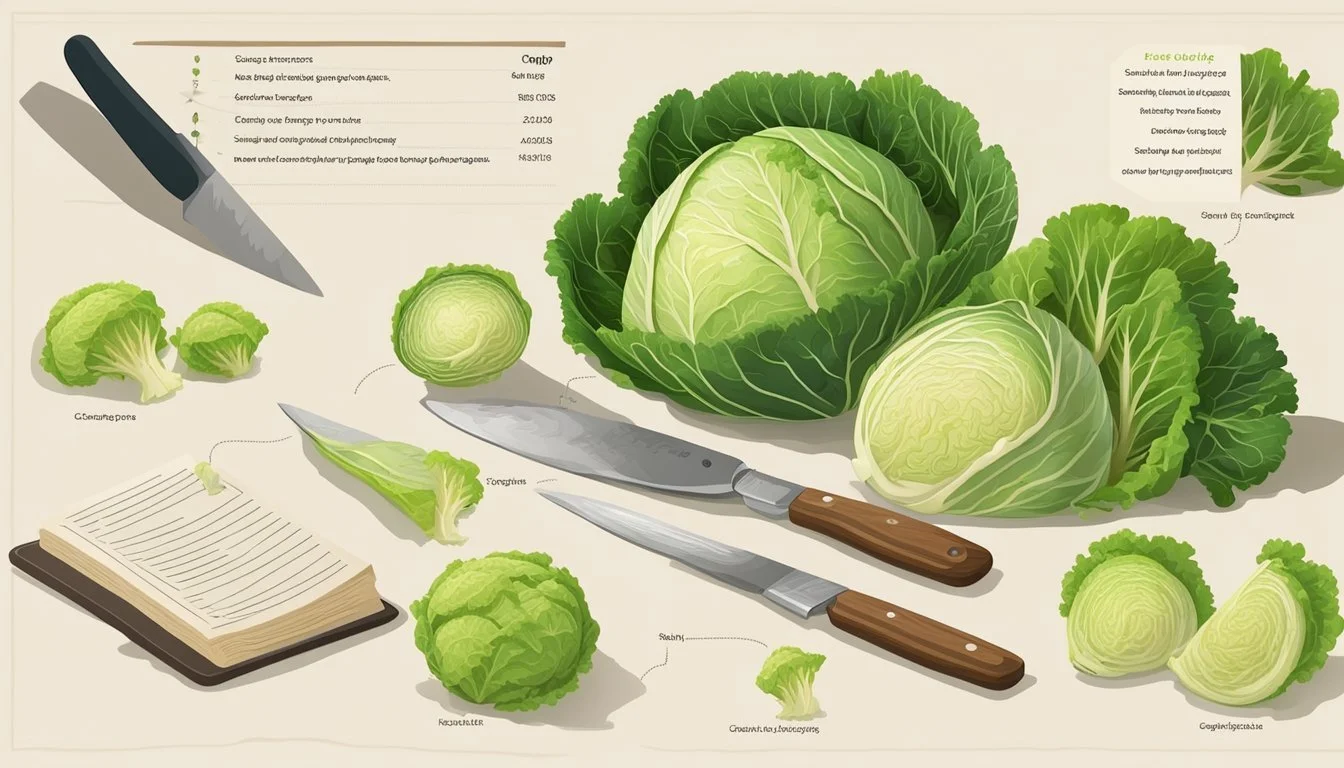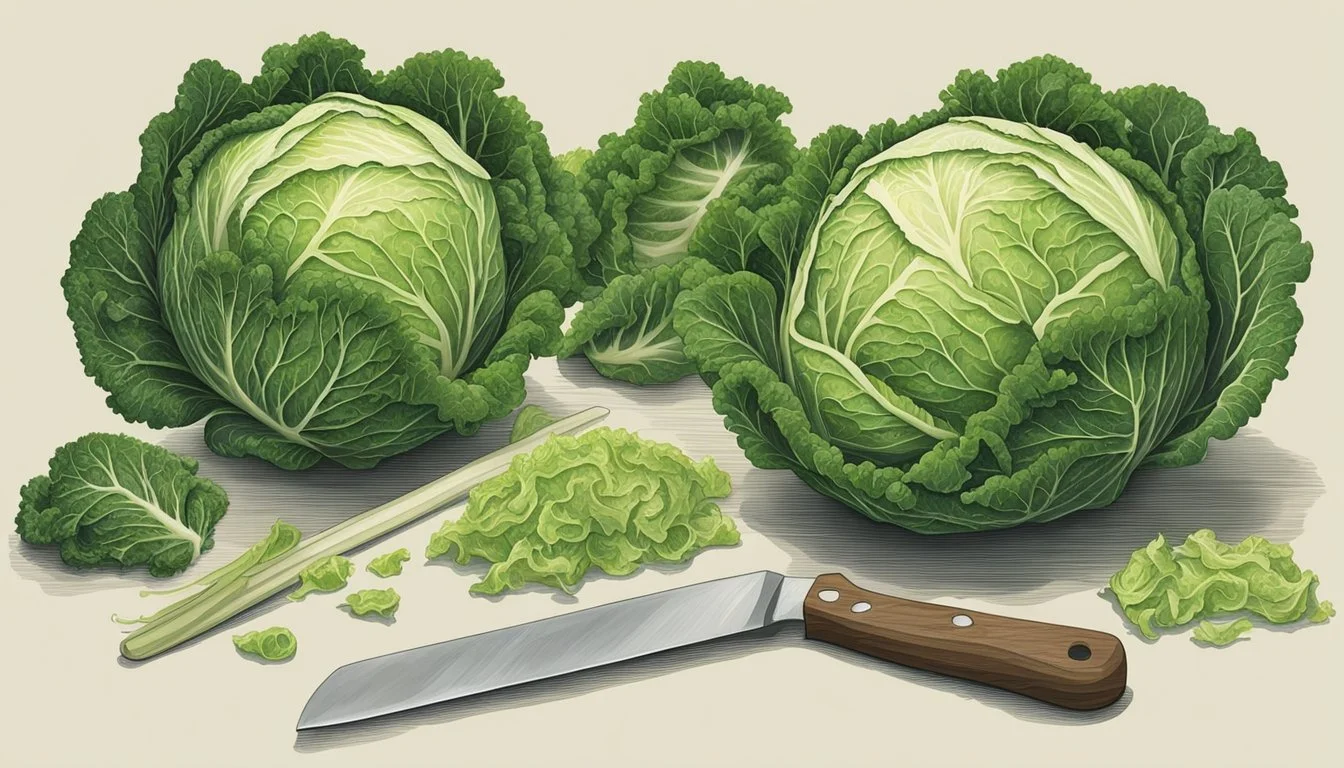How to Substitute Savoy Cabbage for Green Cabbage
A Simple Guide for Home Cooks
Savoy cabbage, with its distinctive crinkled leaves and milder, sweeter taste, often graces dishes with both flavor and a unique texture, yet there are instances where a substitute may be necessary. Whether due to availability or personal preference, knowing how to substitute Savoy cabbage for its more common counterpart, green cabbage, is a valuable kitchen skill. Green cabbage offers a similar texture and flavor profile, making it a suitable alternative in most recipes calling for Savoy cabbage.
When using green cabbage as a stand-in for Savoy, it's important to consider the slight differences in texture and flavor between the two varieties. While Savoy is known for its tender leaves and mild taste, green cabbage has a more pronounced crunch and a peppery flavor that can become milder with cooking. This makes green cabbage versatile enough to be used in cooked applications such as stir-fries, stews, and cabbage rolls, where it can be a complementary ingredient without undermining the dish's integrity.
Adapting green cabbage to fit the role of Savoy in recipes may require adjustments in preparation methods. For instance, its firmer leaves might need a longer cooking time to reach the desired tenderness. Moreover, a savvy cook might slightly alter the seasoning to balance green cabbage's robustness. With thoughtful preparation, green cabbage can successfully be used to replicate the desired qualities of Savoy cabbage in various culinary creations.
Understanding Cabbage Varieties
In exploring cabbage varieties, particularly green and savoy, it's essential to recognize their distinct characteristics, which influence their culinary uses and suitability as substitutes for each other.
Characteristics of Green Cabbage
Green cabbage, typically known for forming tight, spherical heads, is a staple in many kitchens. Its leaves are broad and sturdy with a crisp texture, making it suitable for a variety of culinary applications. The flavor profile of green cabbage is mildly peppery but becomes sweeter as it cooks. It's an excellent base for dishes that require structural integrity, like stuffed cabbage rolls.
Texture: Crisp and dense
Flavor Profile: Mildly peppery when raw, sweetens upon cooking
Features of Savoy Cabbage
Savoy cabbage, distinguishable by its crinkled and ruffled leaves, offers a more delicate texture compared to the denser green cabbage. The leaves of savoy cabbage are more flexible and tender, even when raw, which makes them suitable for salads and slaws. Its flavor is mild and somewhat earthy, lacking the peppery bite of green cabbage, and it holds flavors well when combined with other ingredients.
Texture: Tender and flexible
Flavor Profile: Mild and earthy
Substituting Cabbage in Recipes
When replacing Savoy cabbage with green cabbage in recipes, one must consider variations in texture, flavor, and cooking methods. These differences can affect the overall dish, so it's important to make adjustments accordingly.
Substitute Options for Savoy Cabbage
Napa Cabbage: Mildly sweet with a crunchy texture, Napa cabbage is a 1:1 substitute, particularly in stir-fries and rolls.
Collard Greens: Slightly bitter, these greens can replace Savoy if cooked to reduce bitterness.
Kale: Earthy in flavor; use in raw or cooked dishes where a sturdier texture is desirable.
Red Cabbage: It offers a colorful alternative with a similar crunch and a slightly different taste profile.
Considerations for Texture and Flavor
Texture: If the recipe requires the delicate and tender leaves of Savoy cabbage, opt for greens with a softer texture, such as Napa cabbage, to maintain a similar mouthfeel.
Flavor: When seeking a milder flavor, green cabbage is a suitable replacement, whereas alternatives like collard greens will introduce more bitterness.
Adjustments for Cooking Methods
Stir-frying: Use hearty substitutes like bok choy or kale; they retain their texture under high heat. Steaming: Choose greens like Swiss chard or spinach, which have a more delicate flavor that won't overpower the dish. Raw: When used raw, such as in salads, opt for greens with a sweeter flavor, like Napa cabbage, to mimic Savoy's less pronounced taste.
Specific Dish Adaptations
When substituting Savoy cabbage with green cabbage in recipes, it is important to consider the distinct qualities of each. Green cabbage has a firmer texture and a more pronounced flavor, which can influence the final dish.
Adapting Salads and Slaws
For salads and slaws that traditionally feature Savoy cabbage, green cabbage can offer a crunchier texture. One should thinly slice or shred the green cabbage to mimic the delicacy of Savoy leaves. Dressings may need to be more robust to complement green cabbage's stronger flavor. For example:
Coleslaw: Use thinner slices of green cabbage and let it marinate for a longer period to soften the leaves.
Green Salad: Combine with other greens to balance out its heft, and consider a punchy vinaigrette.
Modifications for Stuffed Cabbage Recipes
In stuffed cabbage recipes, green cabbage's tougher leaves require a longer blanching time to become pliable enough for rolling. They should be blanched until soft but not falling apart, usually 2-3 minutes longer than Savoy cabbage. The filling should be:
Savory: To stand up to the green cabbage's strong taste.
Moist: To ensure the firmer leaves don't dry out during cooking.
Adjustments for Soups and Stews
Green cabbage holds up well in the prolonged cooking times typical of soups and stews. It’s recommended to add green cabbage earlier in the cooking process compared to Savoy to allow it to soften sufficiently. For instance:
Soups: Chop the green cabbage into larger chunks than usual, as it will maintain its structure for longer simmering times.
Stews: Incorporate green cabbage early on to ensure it melds seamlessly with the other ingredients.
Nutritional Considerations
When considering substitutes for Savoy cabbage, it is important for the reader to recognize the nutritional profile and health benefits associated with cabbage varieties. This section outlines the advantages of using cabbage replacements and their impact on dietary fiber content.
Health Benefits of Cabbage Substitutes
Cabbage, irrespective of its variety, falls under the category of cruciferous vegetables. These vegetables are renowned for their richness in nutrients including vitamins C and K, which are essential for immune function and bone health, respectively. Substitutes for Savoy cabbage generally share these health benefits, making them practical and beneficial alternatives in cooking.
Vitamin C: Green cabbage substitutes provide vitamin C, a potent antioxidant necessary for the growth and repair of body tissues.
Vitamin K: An essential nutrient for blood clotting, many green cabbage alternatives offer a substantial amount of vitamin K.
Cabbage Substitute Impact on Dietary Fiber
The fiber content in cabbage and its substitutes is a significant consideration for those looking to maintain a healthy digestive system. As a cruciferous vegetable, green cabbage replacements typically maintain a high level of dietary fiber.
Green Vegetables: A table highlighting the fiber content per serving in common cabbage substitutes.
Substitute Fiber (grams per serving) Green Cabbage 2.5g Collard Greens 5g Napa Cabbage 1g Swiss Chard 3.7g Spinach 2.2g
Each cabbage substitute offers a different fiber profile, which can influence the overall dietary fiber intake for individuals incorporating these green vegetables into their meals.
Preparing Alternative Cabbage Variants
When substituting Savoy cabbage with green cabbage, it is important to understand how to prepare and cook the green cabbage to achieve a similar texture and flavor profile.
Techniques for Cutting and Preparation
To effectively substitute green cabbage for Savoy cabbage, one should prioritize proper cutting and preparation techniques. For whole leaf applications, such as wraps:
Cutting: The green cabbage should be cored and the leaves carefully separated.
Chopping: For salads or slaws, chopping the cabbage into thin strips will help mimic the delicate texture of Savoy cabbage.
For dishes requiring more texture:
Wedges: Cutting the cabbage into wedges is ideal for applications where a heartier bite is desirable.
Methods for Cooking Cabbage Substitutes
Green cabbage offers versatility and can be cooked using a range of methods to substitute for Savoy cabbage in recipes:
Boiling or Steaming: For a tender texture, green cabbage can be boiled or steamed. This approach is suitable for dishes where Savoy cabbage is traditionally used in a softer form.
Sautéing or Stir-frying: When a crisp-tender texture is needed, sautéing or stir-frying the green cabbage in oil over medium-high heat works well.
Roasting: Achieve a caramelized flavor by roasting chopped or wedged green cabbage at a high temperature until edges are browned.
Grilling: To add a smoky flavor, green cabbage wedges can be grilled over moderate heat until charred on the edges.
Braised: For hearty stews, braising chopped cabbage slowly in a flavorful liquid imparts depth and richness.
It is crucial to adjust cooking times as green cabbage can be tougher and may require longer cooking periods than Savoy cabbage.
Appearance and Presentation
When substituting Savoy cabbage with green cabbage, it is essential to consider the visual differences that may affect the final appearance of a dish. Appearance is a significant aspect of culinary presentation and can influence the appeal of food.
Matching the Visual Aspects of Dishes
Green cabbage typically presents itself with a round head and tighter leaves that are a lighter shade of green compared to Savoy cabbage. In contrast, Savoy cabbage is characterized by its distinctly wrinkled or crinkly leaves which are a darker shade of green. These crinkly leaves can add a different texture and a more rustic appearance to dishes.
To match the appearance of Savoy cabbage when using green cabbage:
Texture: Lightly score the leaves of green cabbage to mimic the wrinkled texture of Savoy cabbage.
Color: Choose green cabbages with darker outer leaves where possible.
Shape: Maintain the round head shape common to both types for a consistent look in full cabbage dishes, such as stuffed cabbage.
When sliced or chopped, the difference in texture becomes less noticeable, yet the color contrast may still be visible. It’s important for chefs to take into account how the substitute will integrate with the dish visually, especially in raw or lightly cooked applications where the visual impact is more pronounced.
Conclusion
Substituting Savoy cabbage for green cabbage can be accomplished with ease due to the versatility and similar characteristics of green cabbage. When a recipe calls for Savoy cabbage and one finds themselves without it, green cabbage stands as a reliable alternative.
Green cabbage offers nutritional benefits and a mild flavor, making it a suitable substitute in most dishes where Savoy cabbage is required. Its sturdy leaves allow it to be used in a variety of cooking methods, from raw preparations to cooked dishes such as stews and stir-fries.
When using green cabbage as a substitute for Savoy cabbage, one should consider the following:
Texture: Green cabbage is crisper than Savoy cabbage, so it may need a slightly longer cooking time to achieve a comparable tenderness.
Flavor: While both cabbages have a mild taste, green cabbage is less sweet and has a more peppery note. Adjust seasonings accordingly to match the desired flavor profile.
Appearance: The two cabbages differ in appearance. Green cabbage lacks the crinkled leaves of Savoy, which may slightly alter the presentation of the dish.
Cooking is an art that allows for adaptation. The culinary world appreciates green cabbage's ability to absorb flavors and maintain structure in cooking. This leafy green should be recognized not only as a substitute but also for its own culinary merits within a diverse range of recipes.

